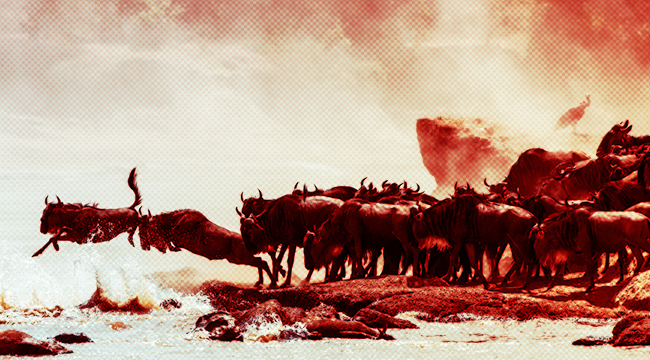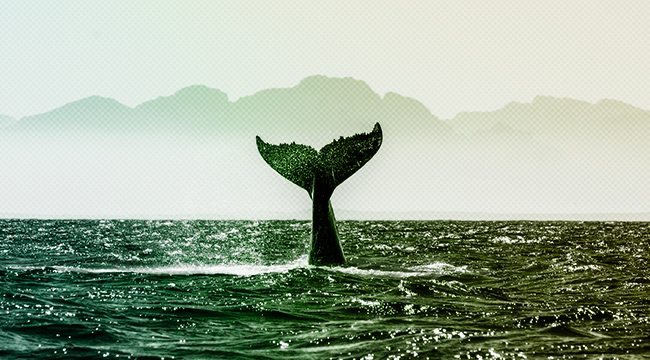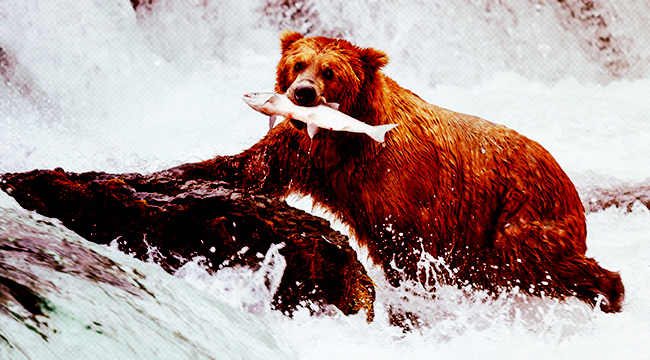
Uproxx knows that science, technology, engineering, and math (STEM) disciplines are driving the future of this planet forward. Every day, we see new ideas, fresh innovations, and bold trailblazers in these fields. Follow us this month as we highlight how STEM is shaping the culture of NOW.
Last year, researchers from Murdoch University analyzed video taken off the western coast of Australia. The film — which appeared on Phys.Org — includes images of a very rare white southern right whale calf suckling from its mother. It was a unique moment and the footage helped researchers to accurately assess the whale’s length, weight, and health, while also studying calving and parenting habits of the species.
It was a score for researchers and the general public alike. And it none of it would have been possible without a drone.
With drones spiking in popularity in recent years, scientists have grown keenly aware of the technology’s advantages. Now they’re hopping on the bandwagon, using drones to observe wild animals in completely new ways. The huge upside of these techniques is quickly becoming apparent — animal migration patterns, breeding habits, and mating can all be studied from a safe remove.
A Cheaper And Safer Alternative

Up until recently, the ability to observe a nursing whale calf would have required a low-flying plane — an expensive prospect. A drone, on the other hand, only involves one-time investment, plus a few upgrades and minor repairs along the way. It costs less and demands less staffing.
But the case for drones is bigger than just dollars and cents. “Almost all wildlife biologists know of a colleague or a friend who’s died in a plane or helicopter crash, more often than not in the line of duty, of surveying nests or counting animals,” said David Bird, an emeritus professor of wildlife biology at McGill University, in an interview with Popular Science.
Along with increased safety (and cost effectiveness), the accuracy of the information acquired by drones is proving to be vastly superior when compared to the more traditional methods.
A study done at Monash University last year concluded that drones offer a much more precise accounting of their subjects than low-level flights. Dr. Rohan Clarke, an ecologist at Monash even predicts that “in the future, drones will be used to monitor populations of birds and animals, especially in inaccessible areas where on the ground surveying is difficult or impossible. This opens up exciting new possibilities when it comes to more accurately monitoring Earth’s ecosystems.”
A Potentially Intrusive Presence

Despite these advantages, we’re still learning how different species will behave when in the presence of drones. In 2015, The New York Times reported on how different species of birds were reacting violently to the devices, just for sharing their airspace. For evidence of this, you don’t have to look much further than the now-infamous YouTube video of a young red-tail hawk attacking a drone in mid-air. The video racked up millions of views, while bringing attention to a real problem: Some animals will not only change behavior in the presence of a drone, they might view the devices as an imminent threat.
Obviously, this kind of reaction creates problems for researchers who want to use drone technology without interfering with animal behavior. It’s also safe to say that we don’t fully know exactly how animals will respond. A study published in Current Biology used previously affixed heart rate monitors and GPS trackers on a small group of black bears to understand their reactions to a drone. On the surface, they didn’t appear to be affected, but it turned out that when the drone was present, their heart rates increased by as much as 300 percent.
Granted, those monitors might not have been telling the whole story. Dave Wilkie of the Conservation Support for the Wildlife Conservation Society told National Geographic that just because the heart rate was increased, it didn’t necessarily correlate to stress. “It’s unfortunate to use the term ‘stressor’ to describe the drones,” he explained. “Heart rate is really an indication of arousal, a natural reaction. It’s about vigilance, not necessarily stress.”
Some animal interaction with drones has actually had a silver lining. A few years back, an underwater drone was sent to the depths of the ocean to study the behavior of great white sharks. One great white decided to attack the drone in an attempt to eat it. This proved less of a problem and more of an opportunity, as the video resulted in a study of subsurface predatory behavior.
Mark Ditmer of the University of Minnesota told National Geographic that he believes animal populations can become used to these drones eventually, which would reduce their impact and make their observations that much more accurate. While the presence of drones have proven chaotic in some instances (usually by hobbyists), they have also been shown to help deter poachers.
What’s Next
In order to continue the use of drones as a window into the animal kingdom with little or no disturbance, there have been significant efforts to make the drones as small and nonintrusive as possible.
The incredibly small size of new-era drones, commonly referred to as micro air vehicles (MAVs), seems like it ought to be a huge advantage, but it’s also proving to be a massive hurdle. For these devices to last longer than a single flight, scientists have started to rely on solar cells on the backs of MAV drones. They’re also programing in the ability to land — so that the MAVs can cling to a surface using static electricity and charge up before resuming flight.
These MAVs will also need to be able to navigate complex environments under adverse conditions. In order to deal with that challenge, Tiras Lin, an undergrad from the Whiting School of Engineering, has begun studying butterflies with a high-speed camera to better understand how the insects are using their wings to control their flight patterns.
While this relatively new technology has been mostly limited to observation, some see drones playing a much more prominent role in how we study animals in the future. It’s not hard to imagine drones that can gather DNA samples, track migration patterns, even react with a certain degree of autonomy to track changes in the environment as they occur in real time.
Though the rise of drones in biology has been rapid, we’ve still barely scratched the surface. Conservationist Dave Wilkie said it best, telling National Geographic that “drones have enormous potential that we’ve barely begun to tap.”
